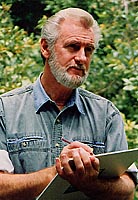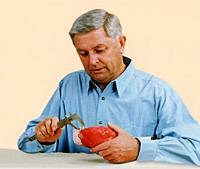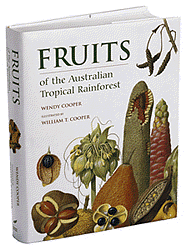Description
Nokomis Editions, 2002. 224 pages, hardcover, 26 full page colour plates, 25 black and white illustrations, dust jacket. 287 x 210 mm
Prompted by an upsurge of interest and research, which have produced much new information about turacos, Joseph Forshaw prepared an entirely new text covering physical attributes, taxonomy, distribution, habitat preferences and the general ecology of all species, and he points out that, despite our improving knowledge, an element of mystery still surrounds these birds. Poor fossil records hinder our understanding of their evolutionary history and affinities with other birds. Despite several attempts to link the family with other groups, the traditional approach is to place them alone in a separate order, so emphasising their distinctiveness.
The most distinctive feature is the presence in their plumage of two complex copper pigments not known to occur in any other living animal, and we are compelled to ask why are these pigments present? Also, how important are visually minor differences in facial pattern for species recognition? Are differences in bill shapes associated with foraging techniques, and what roles do subtle differences in diet play in allowing species lo coexist? What functions are served by the loud, familiar call-notes, and what courtship rituals are in place? Why should the downy chicks be equipped with wing-claws to enable them to clamber amidst branches well before they can fly? These and other queries are addressed in this scholarly work, which is the first fully illustrated monograph to be published since 1860 and the only volume covering all species.
Recognising the strong appeal of turacos in aviculture, this book includes a comprehensive chapter Turacos in Aviculture, contributed by Drs Robert Berry and William Todd, two specialists closely associated with the captive breeding program at Houston Zoo. The expertise and experience of these two eminent curators are manifested in the authoritative, practical advice which will be of valuable assistance to all aviculturists with an interest in turacos.
THE ARTIST – William T. Cooper

In 1968 William Cooper, who started his career as a landscape artist, came to Australian ornithological prominence with his first book A Portfolio of Australian Birds. Handsomely published in a small folio format with an excellent text by one of Australia’s most respected ornithologists, the late Keith Hindwood, Portfolio was the first Australian bird book whose aim was primarily artistic. Bill Cooper’s 24 bird paintings were a revelation; he demonstrated great technical ability combined with a sophisticated understanding of his subjects.
The postures and behaviours were dynamic and the habitat settings accurate. Portfolio was a modest success within the Australian ornithological community but the publication ot Parrots of the World in 1973 established his international reputation. Bill Cooper is now recognised as ‘the world’s leading exponent of the Gouldian style of bird illustration’. His paintings have been purchased by public galleries and are held in some of the finest private art collections throughout the world. Almost all of the original artworks from his books have been purchased en bloc; the National Library of Australia purchased the originals from Parrots of the World, 1973; the originals from Birds of Paradise and Bower Birds, 1977, were purchased by the Papua New Guinea Government; the originals from the second edition of Australian Parrots and Kingfishers and Related Birds, 1983-1994, were purchased by a private collector.
He has exhibited at the most prestigious of all wildlife art shows, the Leigh Yawkey Woodson Art Museum in Wisconsin USA, and in 1990 was awarded the Academy of Natural Sciences (USA) Gold Medal for distinction in Natural History Art. This medal is awarded periodically to an artist ‘whose artistic endeavours and life’s work have contributed to man’s better understanding and appreciation of living things’. In 1994 he was awarded the Order of Australia for his contribution to Art and Ornithology. Bill’s wife, Wendy, is the other half of the Cooper research team. Wendy wrote the text to fruits of the Rainforest, 1994, and her botanical expertise has provided important scientific input for both the Turaco and Cockatoo portfolios. They went to Africa in 1995 to observe and do field sketches of turacos and have used the same work pattern in 1998 and 1999 to produce the cockatoo paintings. They travelled over much of Australia to see all the cockatoos in their habitats, from the snow-covered alps in the south to the steamy, tropical rainforests of the north and across the continent to the west coast to find the two white-tailed species and the Western Corella. At Jurong Bird Park in Singapore, Bill was able to see the Indonesian species and make sketches and notes in preparation for the finished work. Bill’s passion for cockatoos goes back to his early years and working on this collection has allowed him to indulge himself in his favourite subjects.
THE AUTHOR – Joseph M. Forshaw

Joseph Forshaw is one of Australia’s foremost ornithologists, and is recognised internationally as a leading expert on parrots. Prior to retirement, he held a senior position with the Australian National Parks and Wildlife Service. He is a Research Associate in the Department of Ornithology at the Australian Museum, Sydney, and is a Corresponding Fellow of the American Ornithologists Union. In 1977 he was awarded a Queen Elizabeth II Silver Jubilee Medal, and he is currently serving on government advisory committees looking at wildlife conservation issues.







